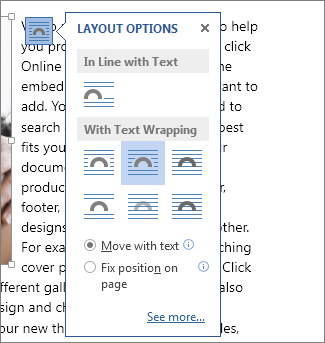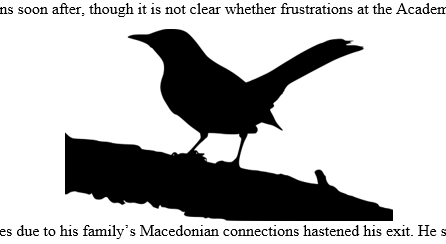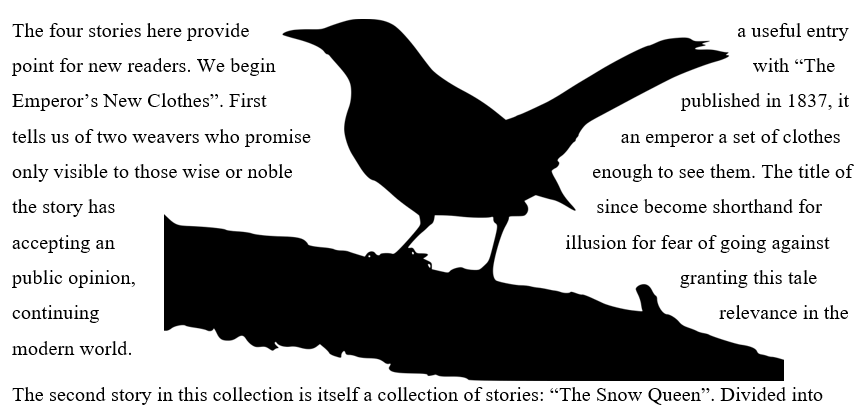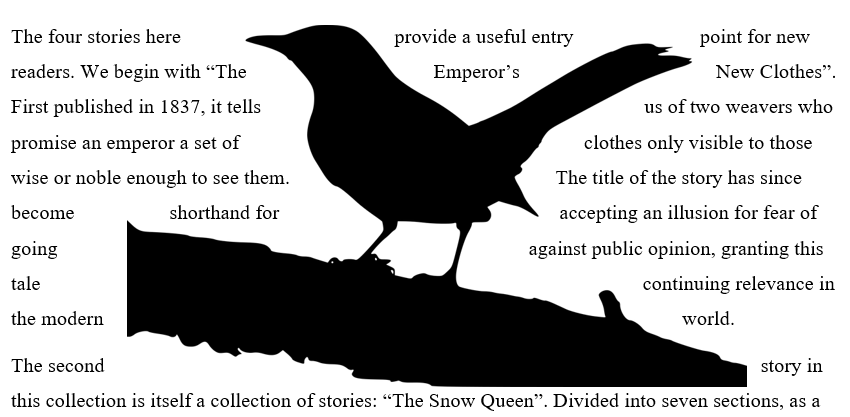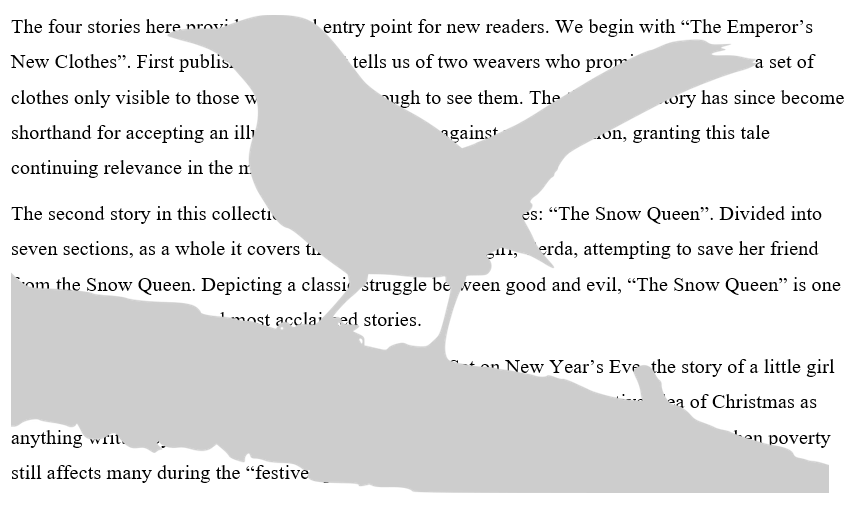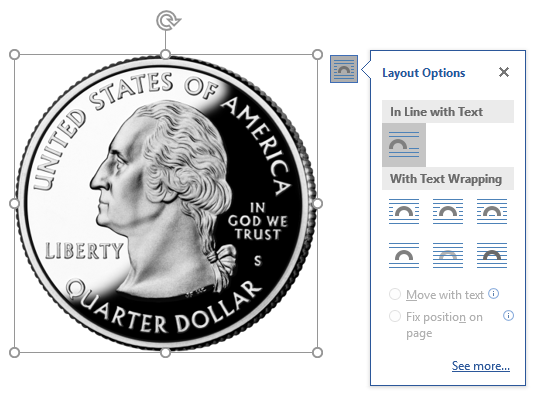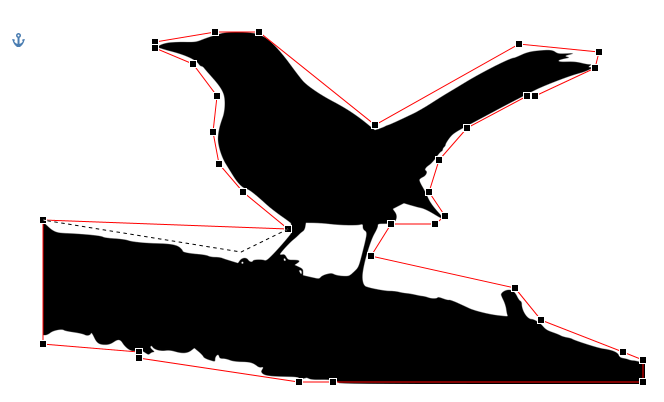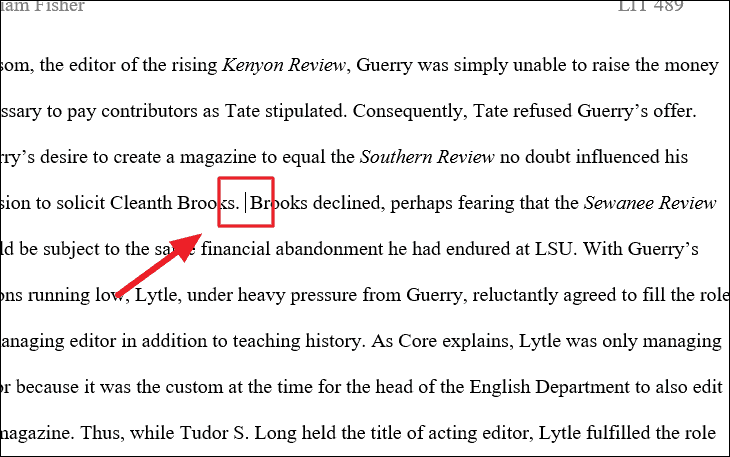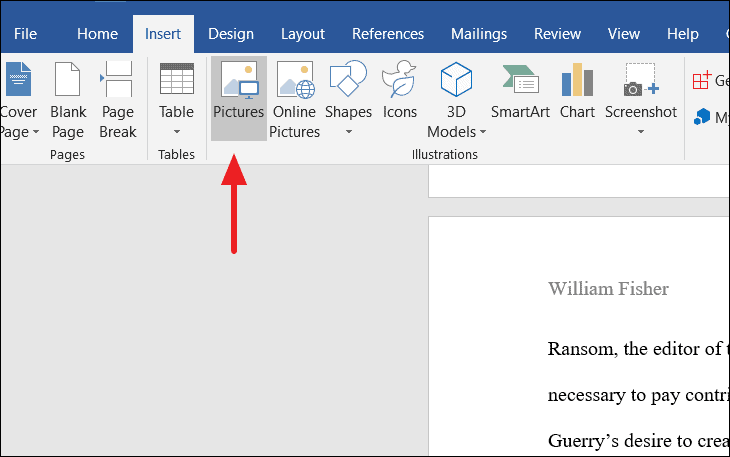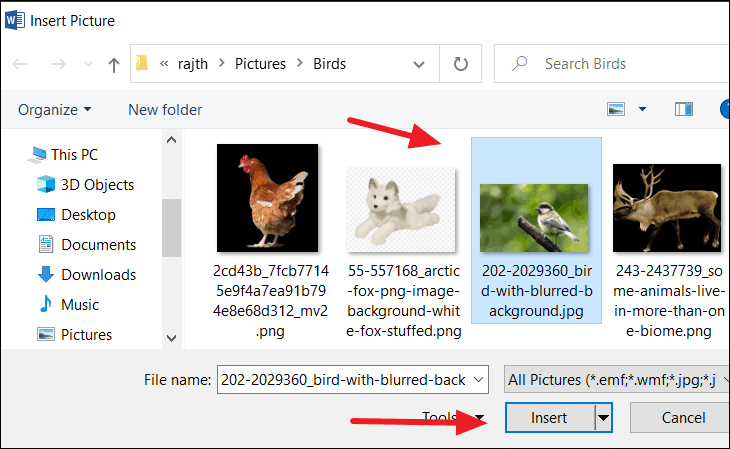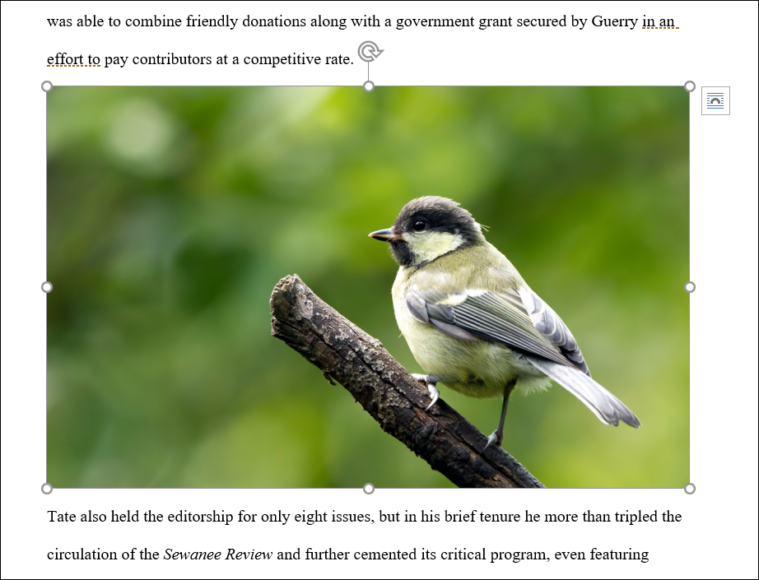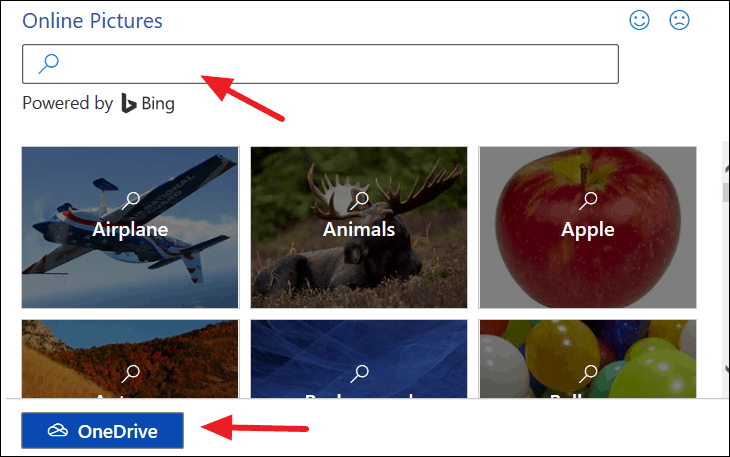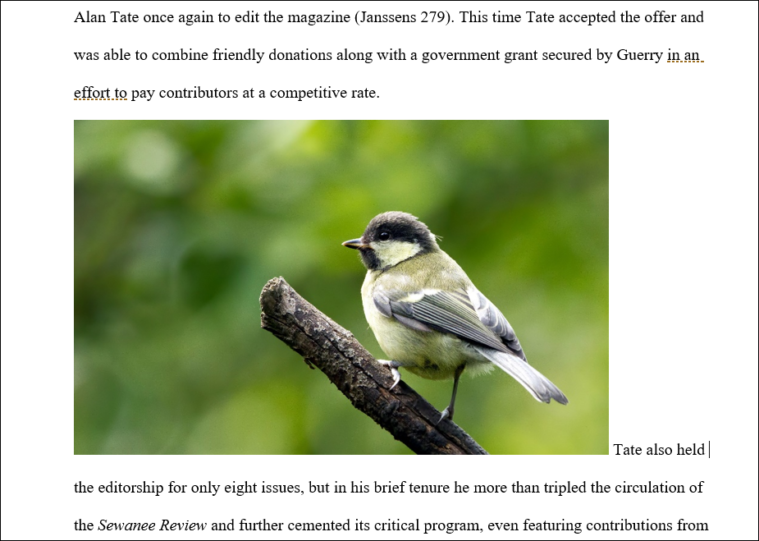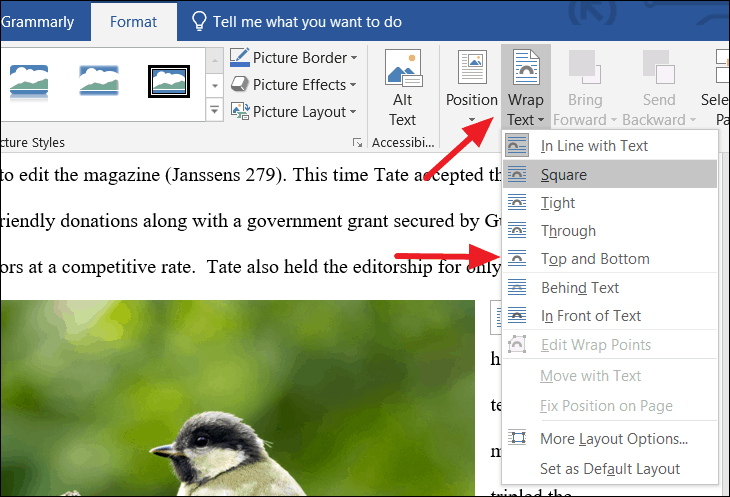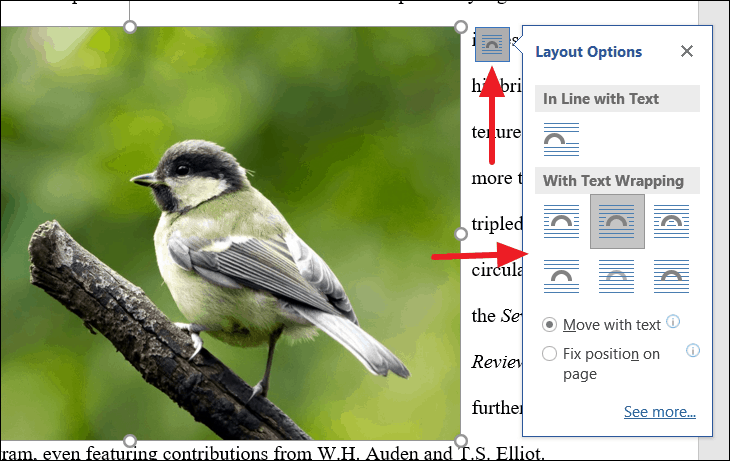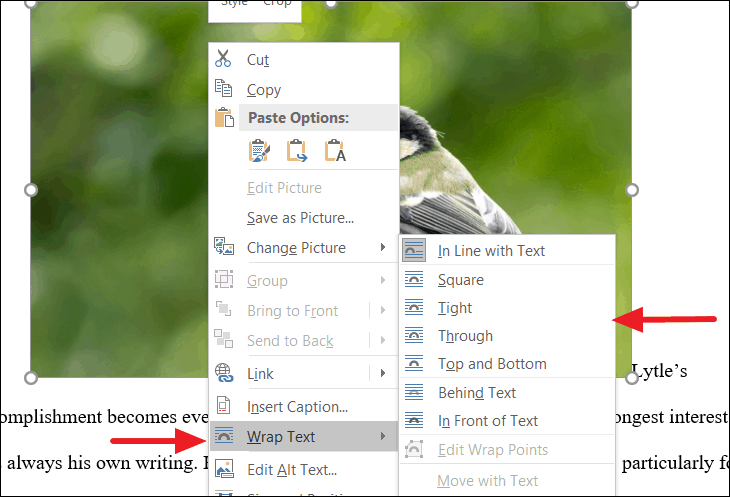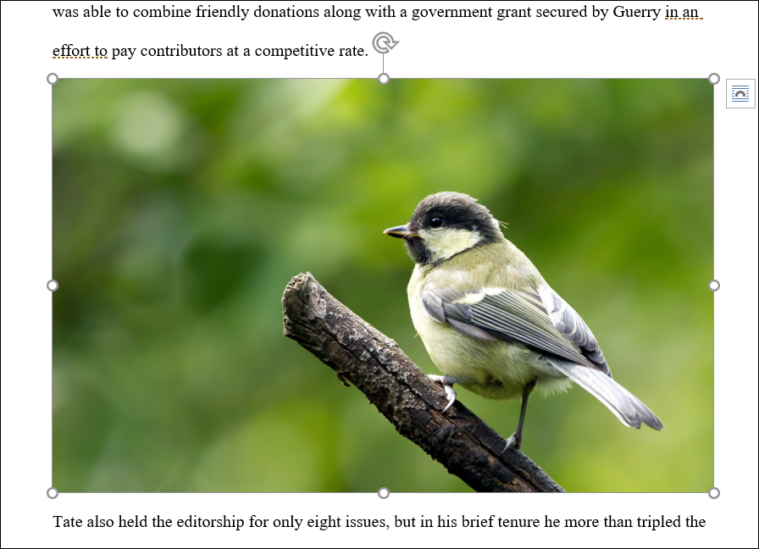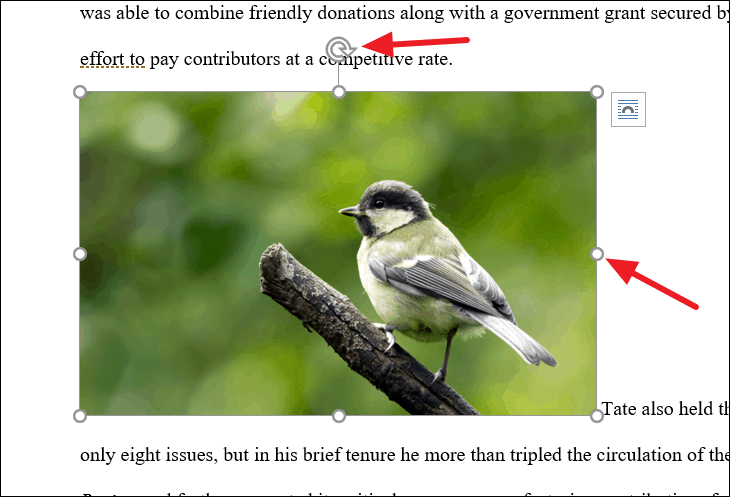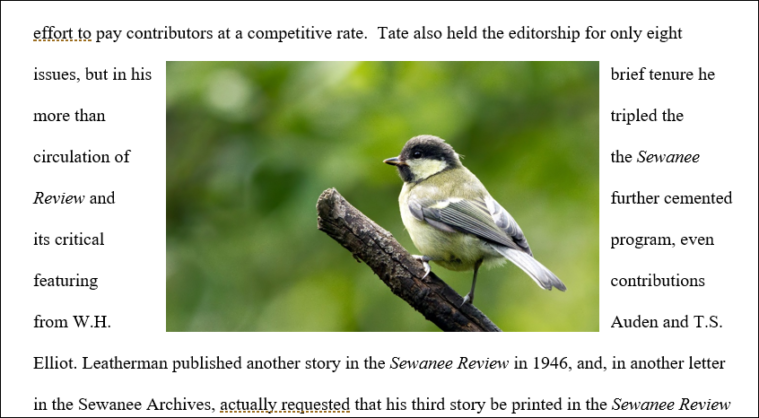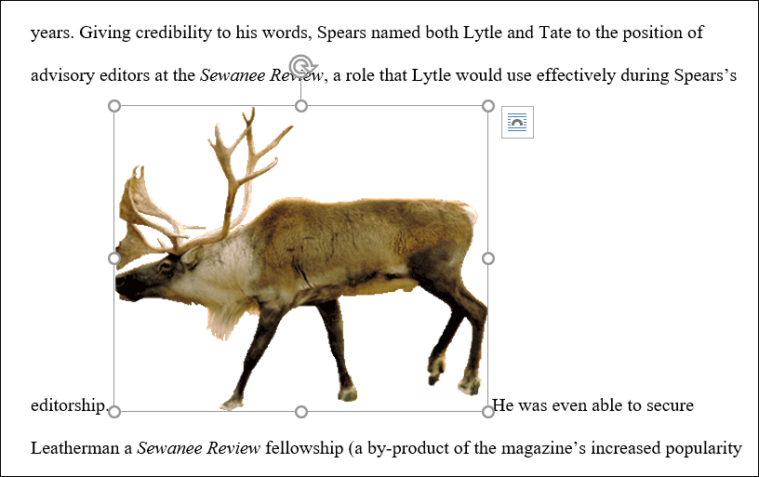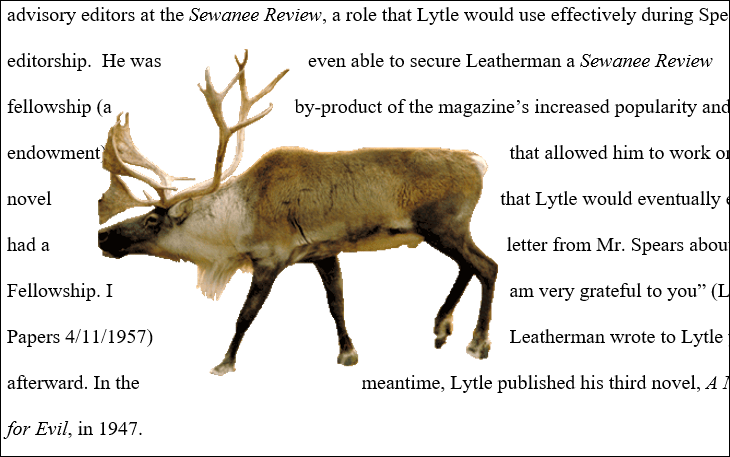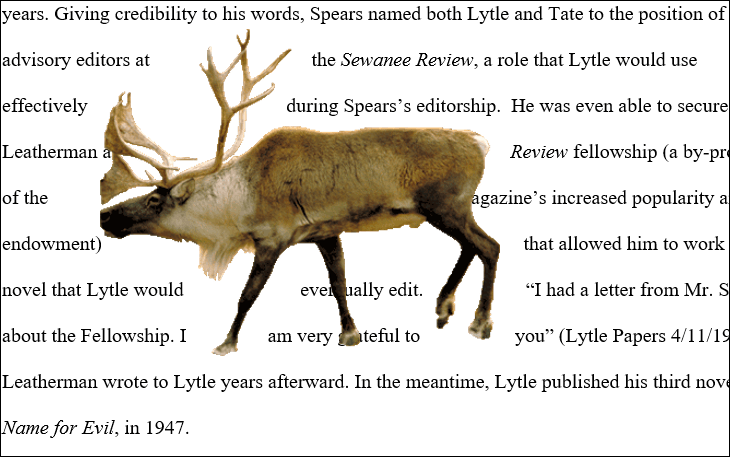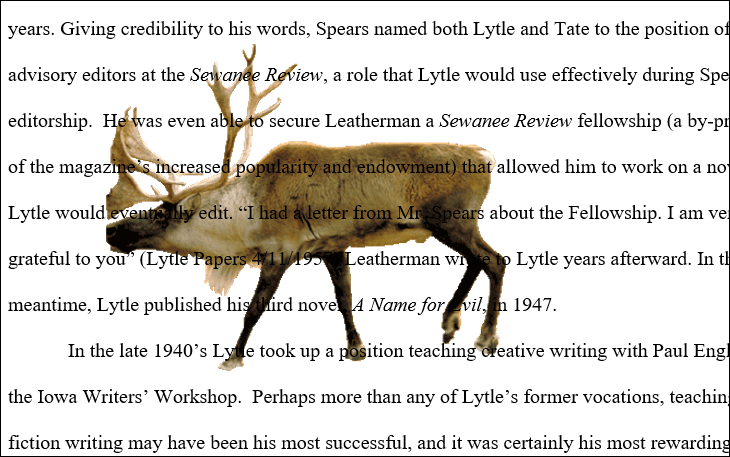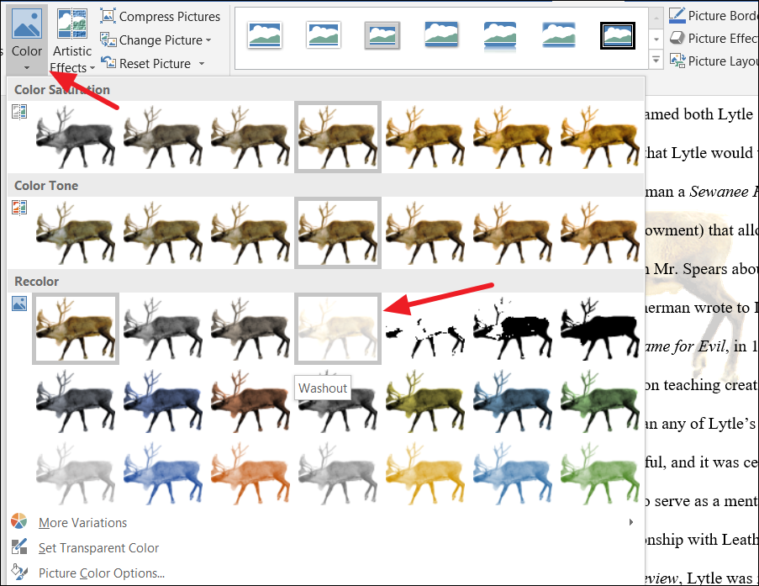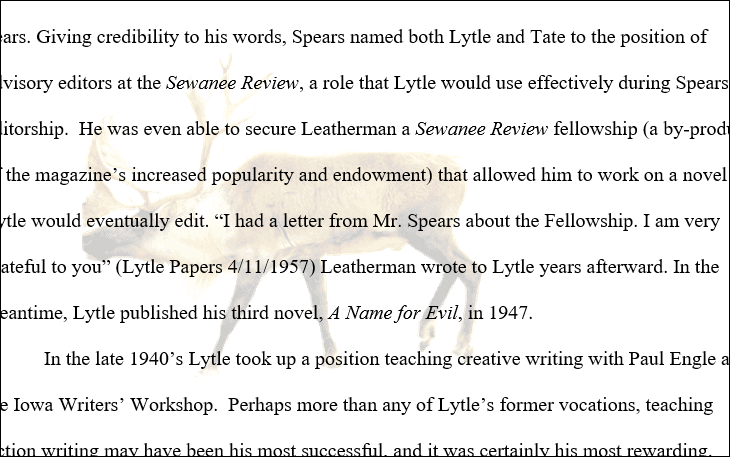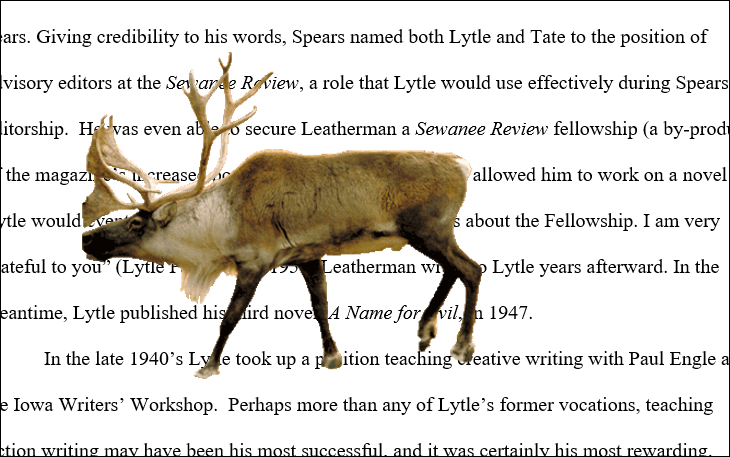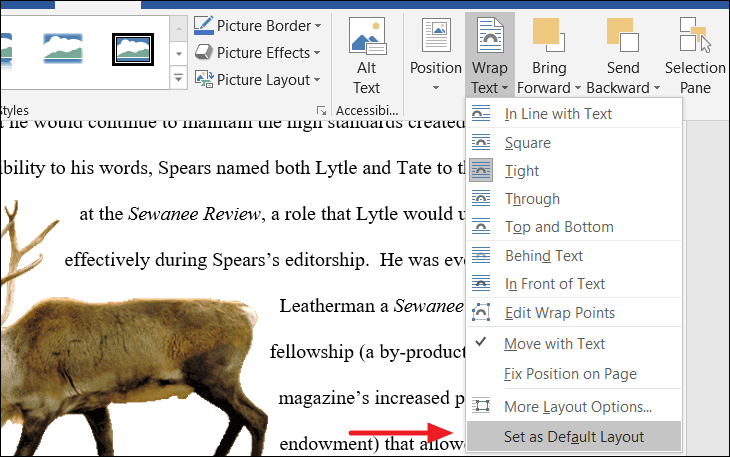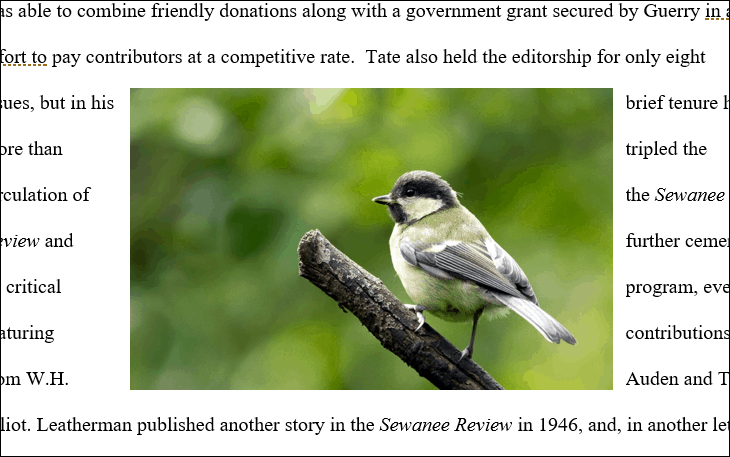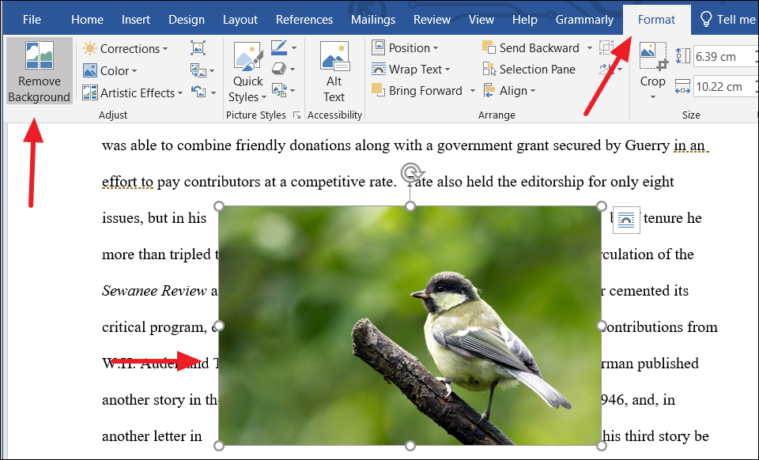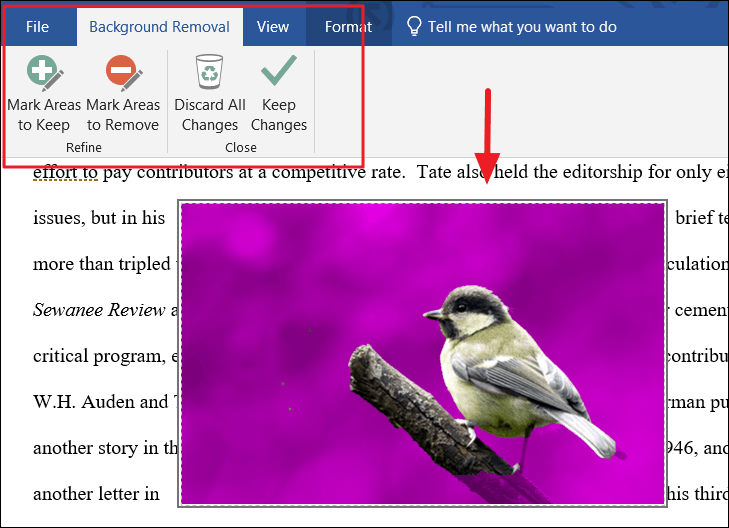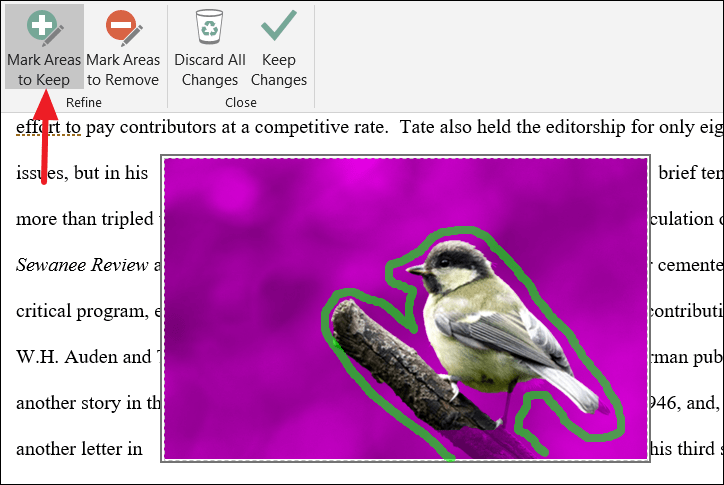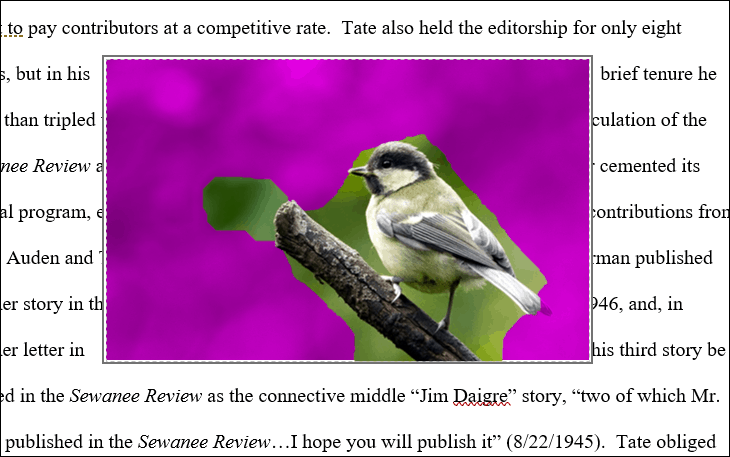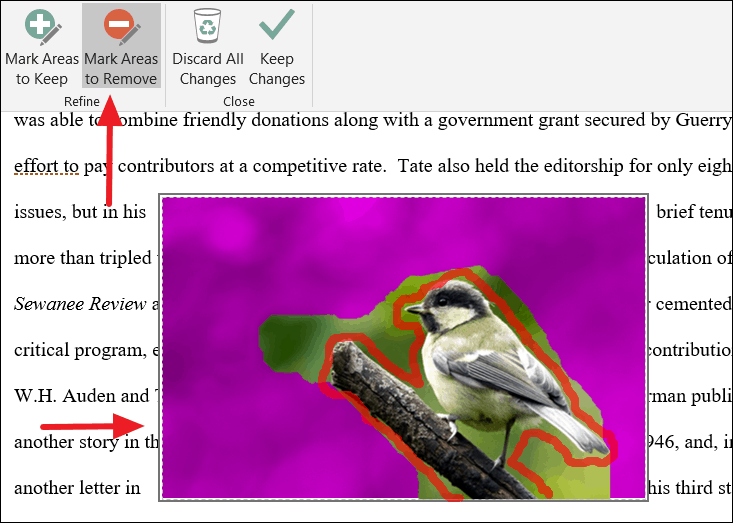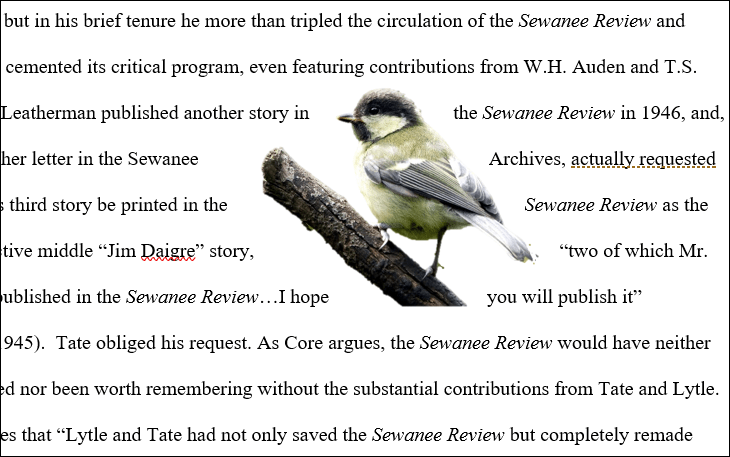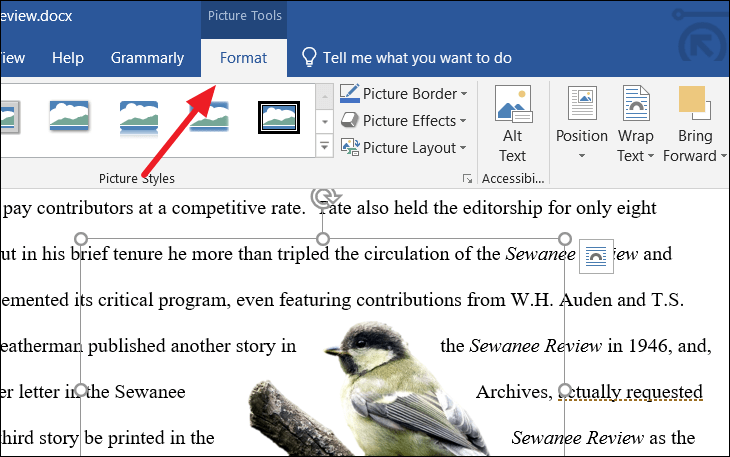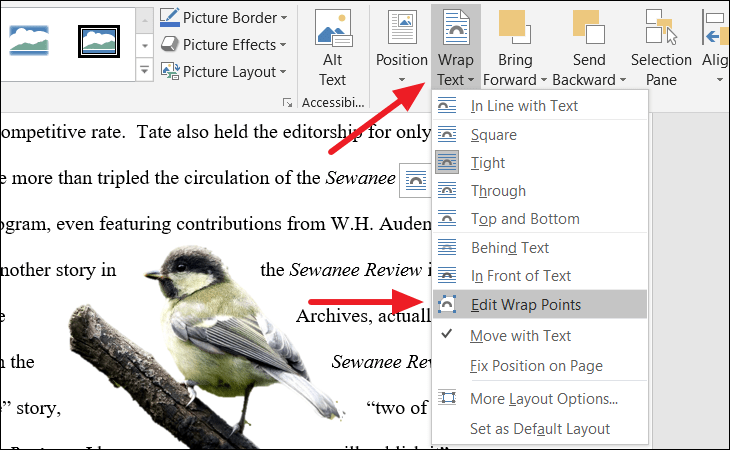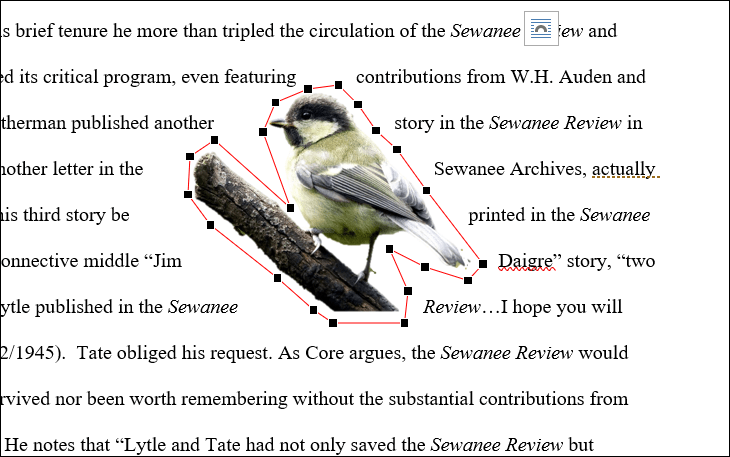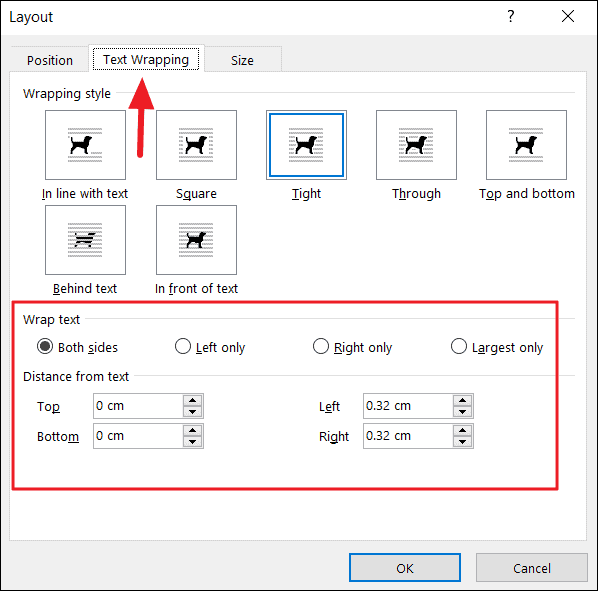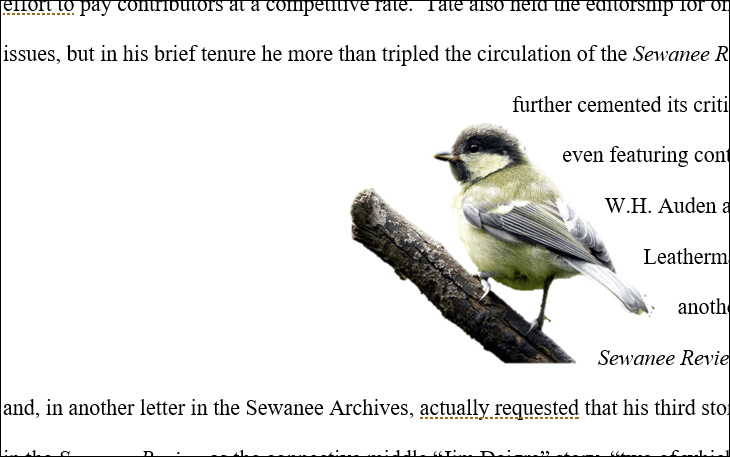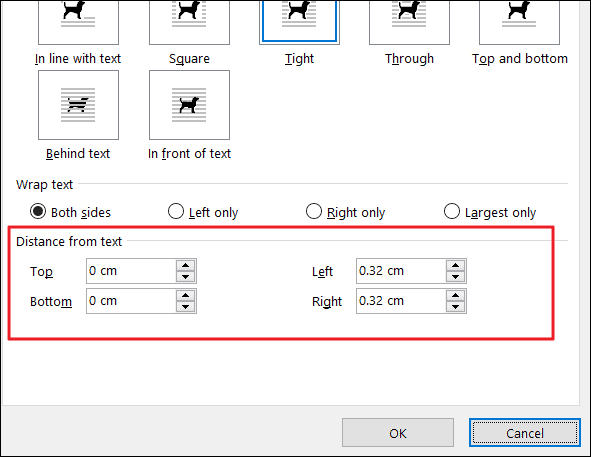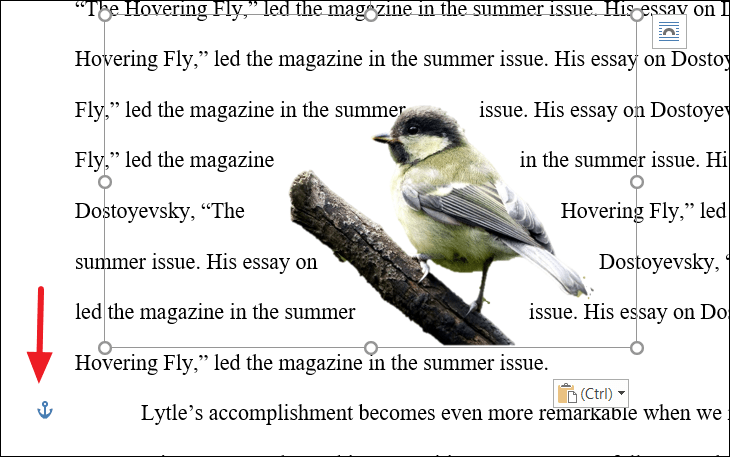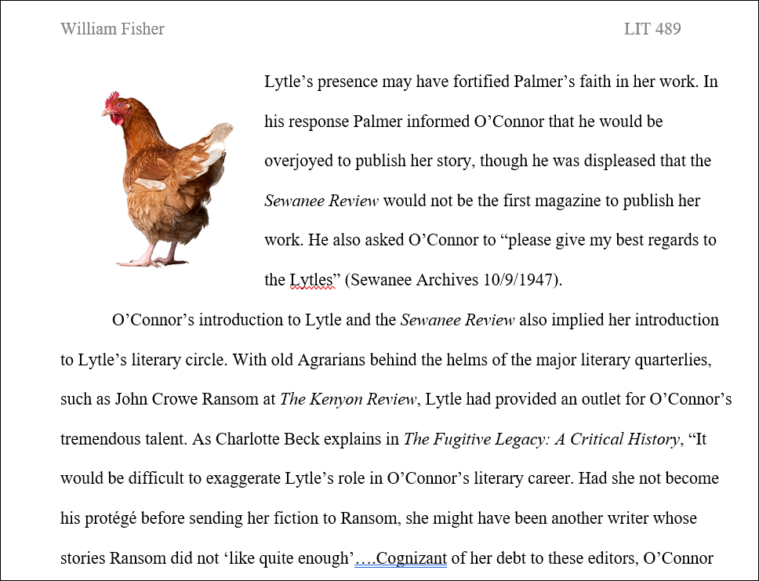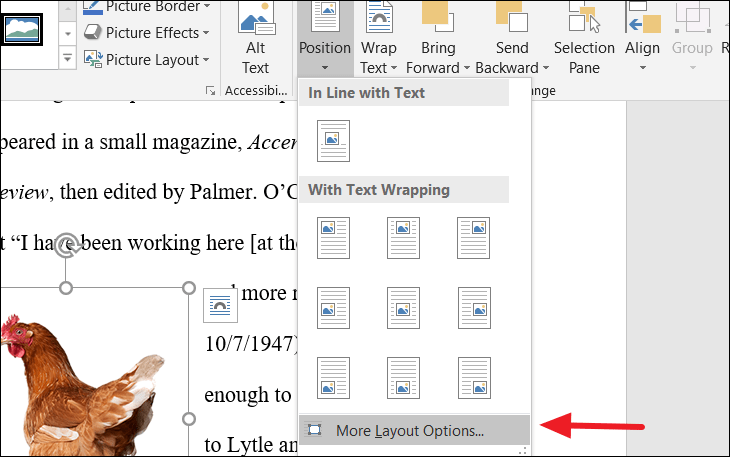Word for Microsoft 365 Word for the web Word 2021 Word 2019 Word 2016 Word 2013 More…Less
Moving or repositioning a picture on page in Word is as simple as dragging it with your mouse. But sometimes it doesn’t work. The key to getting the results you want is to select Layout Options.

-
Select a picture.
-
Select the Layout Options icon.
-
Choose the layout options you want:
-
To bring your picture in front of the text and set it so it stays at a certain spot on the page, select In Front of Text (under With Text Wrapping), and then select Fix position on page.
-
To wrap text around the picture but have the picture move up or down as text is added or deleted, select Square (under With Text Wrapping), and then select Move with text.
-
For or more information and examples of text wrapping, see Wrap text around pictures in Word
The picture is probably behind another object, like a block of text:
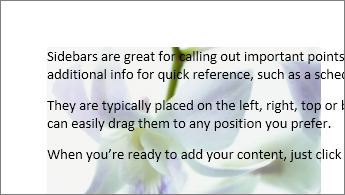
To select the picture, use the Selection pane:
-
Select Home > Select > Selection Pane.
-
In the Selection pane, select the picture.
To move a picture a tiny amount, select the picture, then hold down the Ctrl key and press an arrow key.
To move several objects at the same time, group them together:
-
Select the first object.
-
Hold down the Ctrl key and select the other objects.
-
Right-click one of the objects, point to Group, and then select Group.
Tip: If you are unable to group or multi-select pictures, it’s possible that the layout of your picture is inline with text. If so, please refer to Open Layout Options to change the picture layout to any option under With Text Wrapping.
For absolute control over the alignment and positioning of a picture, use the Layout box to set alignment relative to margins or columns, absolute position in inches, or relative position by percentage. This comes in handy when you want to place a picture a certain distance from something else, like a page margin.
-
Select the picture.
-
Select the Layout Options icon.
-
Select See more, and then make alignment and position adjustments on the Position tab.
If you can’t select any of the position options on the Position tab, select the Text Wrapping tab, and then select any option except the In line with text option.
If you have more than one picture that you want to overlap on a page, you can enable this in the Layout box.
-
Select a picture.
-
Select the Layout Options icon.
-
Select See more.
-
On the Position tab, in the Options group at the bottom, select the Allow overlap check box.
-
Repeat for each picture for which you want to enable overlapping.
In addition to aligning and positioning pictures on a page, you can also align pictures to each other, or to other objects on the page. Although picture-to-picture alignment is not available from the Layout Options icon or the Layout dialog box, it’s a common task that you might do while working with picture positioning and alignment.
-
Hold down the Ctrl key and select each object that you want to align.
-
Go to Picture Format or Picture Tools Format > Align, and then choose an option, such as Center, Top, or Bottom.
An object anchor 
All other wrapping options (Square, Tight, Through, Top and Bottom, Behind Text, In Front of Text) are anchored to a particular place in the document; the anchor indicates the paragraph with which the object is associated. Select a picture, and then select the Layout Options icon to find out how your picture is inserted.

Notes: If you select a picture and it’s not inline with text, but you don’t see an object anchor, you can ensure that anchors are shown in two ways:
-
Show formatting marks On the Home tab, in the Paragraph group, select Show/Hide ¶.
-
Always show anchors Select File > Options > Display, and then select Object anchors.
Because anchors are simply a visual indication of a picture’s relative position on a page, they cannot be removed. However, by trying different text wrapping options, you should find all the flexibility you need in positioning a picture, regardless of its anchor.
For or more information and examples of text wrapping, see Wrap text around pictures in Word.
If you want to ensure that an image stays put even if the text around it is deleted, you can lock its anchor:
-
Select the picture.
-
Select the Layout Options icon.
-
Select See more, and then select Lock anchor.
Note: Because anchors are not used for pictures placed In Line with Text, anchor locking and all other positioning options are unavailable for inline images.
See also
Wrap text around pictures in Word
Rotate a text box, shape, WordArt, or picture in Word
Group or ungroup shapes, pictures, or other objects
If you inserted a picture into your document while using Word for the web, you can cut and paste it to move it within a document, and you can apply paragraph formatting, like vertical spacing and centering, to it. However, you cannot move a picture that was inserted while using the desktop version of Word if the picture has text wrapping or a fixed position on the page.
If you find that you cannot make changes to a picture, and you have the desktop version of Word, select Open in Word to open your document in Word and make changes to its layout.
When you are done, press Ctrl+S to save your document to its original location. You can then open the document again in Word for the web, and continue editing. Word for the web will retain the layout settings that you applied in the desktop version of Word.
Need more help?
Want more options?
Explore subscription benefits, browse training courses, learn how to secure your device, and more.
Communities help you ask and answer questions, give feedback, and hear from experts with rich knowledge.
From corporate logos in press releases to scientific diagrams in research papers, there are many reasons to include images in a Microsoft Word document. But how images fit with surrounding text is important when formatting a document, so you need to understand text wrapping.
What Is Text Wrapping in Microsoft Word?
Text wrapping refers to how images are positioned in relation to text in a document, allowing you to control how pictures and charts are presented. Your options for this in Microsoft Word are:
In Line with Text
This option places an image on the same line as surrounding text. The image will thus move as text is added or removed, whereas the other options here mean the image stays in one position while text shifts and ‘wraps’ around it.
Square
This wraps text around an image on all sides at right angles, as if it had a rectangular box around it. This is the most common form of text wrapping.
Top and Bottom
Text wraps above and below the image so it is on its own line. This is most useful for larger images that occupy most of the width of a page.
Tight
This is similar to Square but without the rectangular box, so text wraps around the edges of the image itself. Useful for irregularly shaped images.
Through
Similar to Tight, but text will also fill any white gaps within the image.
Find this useful?
Subscribe to our newsletter and get writing tips from our editors straight to your inbox.
Behind
Places an image behind the text, allowing you to add a watermark or background image on a page (although MS Word has a separate watermark option, too, which is easier to use in many cases).
In Front of Text
Places the picture in front of the text. This can be used to place a circle around some text or to add an arrow to highlight part of a passage.
The best choice will depend on your needs, but Square and Tight work in most cases. As such, these should be your default options.
How to Control Text Wrapping
After adding an image to a document, you can adjust the text wrapping to make sure it fits with the surrounding text. To do this:
- Click the image you want to format
- Click Layout Options or go to Format > Arrange on the ribbon
- Open the Wrap Text menu and select the setting required
If you want to use the Tight or Through options effectively, you may also need to adjust the wrapping points for the image. To do this:
- Select the image you want to adjust
- Go to Format > Arrange
- Open the Wrap Text menu and click Edit Wrap Points
- Drag the red lines to adjust the wrap points as required
The instructions above are for Microsoft Word on Windows computers, but the process is similar in Word for Mac.
Download Article
Download Article
- Adding an Image
- Wrapping Text
- Removing Wrap Text
- Video
- Q&A
- Things You’ll Need
|
|
|
|
|
Microsoft Word helps you incorporate images and text together in order to illustrate a document, and you can learn to wrap text around images in order to change the default settings. This wikiHow shows you how to use wrap text in Word to add captions to images.
-
1
Click on the area where you want your image. Once you do, a flashing vertical line appears right where you want the image placed.
- A mouse is useful for working with images in Word, because you have more control of the size and shape when you can click and drag the image.
-
2
Click Insert. This appears in the menu at the top of the page and pulls up a menu of different options.
Advertisement
-
3
Select Pictures.This will allow you to insert any jpg, pdf or other type of image that you have on your computer (or drives) into the document.
-
4
Select Photo Browser. This will let you choose from the photo program on your computer.
- Choose Picture From File if your image is on your desktop or in another folder.[1]
- Choose Picture From File if your image is on your desktop or in another folder.[1]
-
5
Select your image. Once you’ve opened the dialog box for inserting an image, navigate to the folder where your image is saved and click on it once to select it for insertion into the document.
-
6
Click Insert. This appears as a button at the bottom of the dialog box. Once done, your image is in the location you selected with your cursor.
-
7
View your image. Keep in mind that Word’s default setting is to put the image “in line.” This means it will treat it as if it is a large letter or a tall line of text.
- Text wrapping will allow the text to wrap around the image, go over the image or beside the image.
Advertisement
-
1
Click on the picture with your cursor. This action will bring up the Picture Formatting menu in the ribbon at the top of Word.
- Clicking outside of the image will take the picture formatting menu away and bring you back to the text formatting menu.[2]
- Clicking outside of the image will take the picture formatting menu away and bring you back to the text formatting menu.[2]
-
2
Select Wrap Text. It may be inside the Arrange grouping or in the Advanced Layout tab, Drawing Tools tab or SmartArt Tools tab, depending on the version of Word you are running.
-
3
Click the Wrap Text button. This appears in the top-right corner of your image when you click on it and will pull up a drop-down menu listing different text wrapping options.
-
4
Select a text wrapping option. Word has different text wrapping options, which you can pick according to your needs:
- Choose Square if your image is square and you want to wrap the text around the square border of your image.
- Choose Top and Bottom if you want the image to stay on its own line, but be between text on the top and bottom.
- Choose Tight to wrap text around a round or irregularly shaped image.
- Choose Through to customize the areas that the text will wrap. This is best if you want the text to be incorporated with your image in some way, or not follow the borders of the image file. This is an advanced setting, because you will pull or drag image points in and out of their original borders.
- Choose Behind Text to use the image as a watermark behind the text.
- Choose In Front of Text to display the image over the text. You may want to change the color, or it can make the text illegible.
-
5
Re-position the image. After you have selected your text wrapping option, you can click and drag your image to re-position it on the page. The program will allow you to place it where you want it now, with the text flowing around it.
-
6
Experiment with different types of text wrapping. Each image and project requires different types of text wrapping. Browse through options when you add a new image to make sure your wrap text is properly formatted.
Advertisement
-
1
Click on the text box with your wrap text. This will pull up the markers for expanding and/or moving the text box along with making your text editable.
-
2
Highlight all but the first letter of your wrap text. It’s important to leave the first letter un-highlighted because you’ll need to press the Backspace key, which could end up deleting the image you inserted above the wrap text.
-
3
Press the ← Backspace key. This will delete the text you highlighted from the text box. Make sure to delete the first letter after the rest of the text, since this will reset your wrap text settings.
Advertisement
Add New Question
-
Question
I inserted a picture, chose «text wrapping,» and selected «tight.» How do I unwrap it?
Select the «In Line with Text» option in the same text wrapping menu. This will return the image to the default text wrapping setting — the same as when you initially added the image.
-
Question
How do I get two images next to each other?
Just insert one picture right after the other (or put a space in-between if you want). If they don’t both fit on the same line, then resize them by clicking one of the corner squares and moving it inward.
-
Question
How do I select which text will wrap around the picture?
Highlight the paragraph/words you would like to use and then select «Wrap text.»
Ask a Question
200 characters left
Include your email address to get a message when this question is answered.
Submit
Advertisement
Thanks for submitting a tip for review!
wikiHow Video: How to Wrap Text in Word
Things You’ll Need
- Mouse
- Microsoft Word
References
About This Article
Article SummaryX
«When you insert an object, such as an image or shape, into your Word document, you can choose how your text wraps around it. First, insert an object. To do this, click the place in your document where you’d like it to appear, click the «»Insert»» tab, and then select the object you want to include. By default, the object will be placed in line with the text, which means it’ll probably interrupt the document’s text flow. To make text wrap around the object instead, click the object once to select it, and then click the Layout Options icon at its top-right corner—it’s the half-circle surrounded by a bunch of lines. Now you’ll see several text-wrapping options under «»With Text Wrapping.»» Each option has an icon which illustrates how the text will wrap around the object. Click the first icon in this section to wrap the text around the object in a nice clean manner that adds a little space between the object and text. Or, click through the other options to see if they better suit your needs. If you drag the object to another location in the text, the text will continue to wrap around it using your selected text-wrapping setting. Click anywhere outside the object to close your Layout Options and return to editing your document.
»
Did this summary help you?
Thanks to all authors for creating a page that has been read 271,746 times.
Is this article up to date?
Text wrapping in Word is about how text behaves around a graphical object or illustration, such as a picture, shape, textbox or even a table. It controls how text position itself or flexibly flows to the position of a graphic in your Word document. For example, you can use the Square text wrapping to wrap text around the shape or picture.
There are four options that allow you to wrap text around objects in Word. These four options are explained and illustrated below.
With this option, the object sits inside a rectangular container. And text flows around the rectangle, leaving some space between the text and the object. When this option is used, the object (picture, shape or textbox) can be dragged to a different location within the document, while maintaining its rectangular shape.
To set a square text wrapping:
- Right-click on the picture
- A shortcut menu appears. Click on Wrap Text.
- Another shortcut menu appears with the layout options, click on the Square option.

- Alternatively, click to select the object. The Layout Options icon will appear at the top right corner of the object. Click on this icon and then choose Square from the list of wrapping options.
This is how you may apply the Square layout option to a picture in Word. This option can also allow you to move the picture anywhere in your Word document by dragging.
Tight text wrapping option
Wrapping text with the tight layout option is similar to the square wrap. The difference is that the text is closer to the object and matches its shape. For example, if the shape of the object is a circle or a rectangle, the hole in the text will be shaped like a circle or rectangle respectively around the object.
To set Tight text wrapping in Word:
- Right-click on the picture
- A shortcut menu appears. Click on Wrap Text.
- Another shortcut menu appears with the layout options, click on the Tight option.

- Alternatively, select the picture to display the Layout Options icon. Click on this icon and select the Tight layout option.
This is how you may set a tight text wrap in Word.
Top and Bottom wrap
This places the image or picture in a rectangular box that has the same width as the margin. This way, the text flows above and below, but not beside the picture or shape.
To set Top and Bottom text wrap in Word:
- Right-click on the picture
- A shortcut menu appears. Click on Wrap Text.
- Another shortcut menu appears with the layout options, click on the Top and Bottom option.

- Alternatively, click on the Layout Option at the top right corner of the object, then select the desired text wrapping option from the shortcut menu.
Text wrapping in Word – Through option
Depending on the nature of the image, the text flows through any open area of the image. However, there is no enough proof that it works. In practice, this option appears to have the same effects and behavior as the Tight wrapping.
To set text wrapping in Word with the Through option:
- Right-click on the picture
- A shortcut menu appears. Click on Wrap Text.
- Another shortcut menu appears with the layout options, click on the Through option.

- Alternatively, use the Layout Options icon at the top right corner of the picture to select the desired wrapping option.
These are the four layout options that allow you to wrap text around a picture, shape, or text box in Word.
Go to Picture Format or Shape Format and select Arrange > Wrap Text. If the window is wide enough, Word displays Wrap Text directly on the Picture Format tab. Choose the wrapping options that you want to apply. For example, In Line with Text, Top and Bottom, and Behind Text.
Contents
- 1 Why is my text not wrapping in Word?
- 2 What is word wrap in Word?
- 3 What is the wrap text?
- 4 What are the text wrapping options?
- 5 How do I edit text wrap in Word?
- 6 What is word wrap example?
- 7 How do I wrap text in word 2007?
- 8 How do I wrap text in Notepad?
- 9 How do you wrap text with keyboard?
- 10 How do you wrap text in a cell?
- 11 How do you unwrap text in Word?
- 12 How do I make text the default wrap in Word?
- 13 How do I change text wrapping settings?
- 14 How do you wrap text in Java?
- 15 How do you wrap text in CSS?
- 16 How do you wrap text in HTML code?
- 17 How do you wrap text in Word 2010?
- 18 How do I wrap text in Wordpad?
- 19 What is word wrap in Windows Notepad?
- 20 In which menu of Notepad word wrap option is found?
Why is my text not wrapping in Word?
The advanced options in the Word Options dialog box. Make sure the Show Text Wrapped Within the Document Window check box is cleared.
What is word wrap in Word?
Definition of word wrap
: a word processing feature that automatically transfers a word for which there is insufficient space from the end of one line of text to the beginning of the next.
What is the wrap text?
“Wrapping text” means displaying the cell contents on multiple lines, rather than one long line. This will allow you to avoid the “truncated column” effect, make the text easier to read and better fit for printing. In addition, it will help you keep the column width consistent throughout the entire worksheet.
What are the text wrapping options?
What are the Text Wrapping Options?
- Square, Tight, and Through: These three options are all variations on the same thing.
- Top and Bottom: This option keeps the text above and below the object, but not to its sides.
- Behind Text and In Front Of Text: These two options don’t affect the text at all.
How do I edit text wrap in Word?
On the Format tab, click Wrap Text, and then click Edit Wrap Points. After you click Edit Wrap Points, you see a red dashed outline with square black handles (called wrap points) on it around the picture. You can change the shape of the outline by dragging the black handles.
What is word wrap example?
An example of word wrap is the automatic moving of the words on a long line of words to fit the words within a cell on a spreadsheet. A word processing feature that moves words to the next line automatically as you type based on the current right margin setting.Words exceeding the margins are set to begin a new line.
How do I wrap text in word 2007?
Select the text box. Click the dialog launcher in the Paragraph group of the Home tab. Click the Indents And Spacing tab and select Centered in the Alignment box. Click the Line And Page Breaks tab, select All in the Tight Wrap box (Figure D), and click OK.
How do I wrap text in Notepad?
Step 1: Open Notepad. Step 2: Click the Format tab at the top of the window. Step 3: Select the Word Wrap option from this menu. Note that this setting persists through different files, and as you open and close Notepad.
How do you wrap text with keyboard?
Wrap Text Keyboard Shortcut
Select the cells to which you want to apply wrap text then press Alt ➜ H ➜ W. Certainly a quick and easy way to apply the formatting.
How do you wrap text in a cell?
Wrap text automatically
On the Home tab, in the Alignment group, click Wrap Text. (On Excel for desktop, you can also select the cell, and then press Alt + H + W.) Notes: Data in the cell wraps to fit the column width, so if you change the column width, data wrapping adjusts automatically.
How do you unwrap text in Word?
Right-click the control for which you want to enable or disable text wrapping, and then click Control Properties on the shortcut menu. Click the Display tab. Select or clear the Wrap text check box.
How do I make text the default wrap in Word?
In line with text may not be what you prefer, so here’s how to change the default.
- Go to File > Options >Advanced.
- In the Cut, copy, and paste section, change the setting under Insert/paste pictures as: to the text wrapping style you want.
- Select OK.
How do I change text wrapping settings?
To wrap text around an image:
- Select the image you want to wrap text around. The Format tab will appear on the right side of the Ribbon.
- On the Format tab, click the Wrap Text command in the Arrange group. Then select the desired text wrapping option.
- The text will wrap around the image.
How do you wrap text in Java?
The first wrap() method takes the String to wrap as its first argument and the wrap length as its second argument. The second wrap() method takes for arguments. The first is the String to wrap and the second is the wrap length. The third is the newline characters to use when a line is wrapped.
How do you wrap text in CSS?
The overflow-wrap property in CSS allows you to specify that the browser can break a line of text inside the targeted element onto multiple lines in an otherwise unbreakable place. This helps to avoid an unusually long string of text causing layout problems due to overflow.
How do you wrap text in HTML code?
To wrap text around an image by altering the HTML code:
- Example:
Paragraph text.
- Example:
Paragraph text.
- Example:
How do you wrap text in Word 2010?
Summary – How to use text wrapping in Word 2010
- Select the picture.
- Click the Format tab under Picture Tools.
- Click the Wrap Text button.
- Select the style of text wrapping that you want to use for this picture.
How do I wrap text in Wordpad?
Go to the “View” menu and choose “Options.” On the “Rich Text Tab” select how you want the words to wrap in WordPad. You can have the words wrap to the window, wrap to the ruler or not wrap at all. This does not affect the margins of your page, just how the words appear in the work space.
What is word wrap in Windows Notepad?
Word wrap is a feature in many text editors such as Notepad++ that formats long lines of text by wrapping extra text onto multiple lines.To add a new line to code, a specific “newline” character has to be used, therefore, as Word wrap doesn’t add newline characters, a compiler doesn’t count the text as a new line.
Tap or click to open Notepad. Tap or click the Format menu, and then tap or click Word Wrap.
From company logos to diagrams in project papers, there are many reasons why you may want to insert images in a Word document. But images and texts don’t always work together well. When you include an object like images or other illustration types into a Word document, it doesn’t look as good as it could and it’s difficult to move it exactly where you want.
By default, when you insert an image into a Word document, Word treats that image as an individual character in line with the text and increases line spacing depending on the size of the picture. This will give the document an awkward look and with a lot of empty spaces. Also, whenever you add more texts or remove texts from the document, the image moves around with the rest of the texts.
If you want the texts to flow around the object in the way you want, you’ll need to wrap your text around the object in Word. To do this, Word provides several text wrapping options which allow you to control how images and objects are displayed in a document. Let’s see how to wrap text around an image or object in a Word document.
Insert Image in Word
You can only change wrap text wrapping options after you inserted the image into the Word document. You can insert various illustration objects such as pictures, icons, SmartArt, charts, and screenshots. Word treats all of these illustration types the same way. So if you learn how to wrap text around a picture, you would know how to wrap text around other objects.
There are two ways to insert an image in a Word document. You can either insert from a file in your local drive or you can insert an image online. Here’s how you do it:
First, place the insertion point (text cursor) where you want to insert the image.
Next, go to the ‘Insert’ tab on the Ribbon and click the ‘Pictures’ option in the Illustrations group.
In the Insert Picture dialog, navigate to the folder where your picture is located. Then select the image and click ‘Insert’.
The image will be inserted in the document.
Insert an Online Picture
If you want to insert an image from online sources, click the ‘Online Pictures’ option instead of Pictures on the Ribbon.
The Online Pictures window will appear. Here, you can choose an image from your ‘OneDrive’ or from Bing image search.
Search for an image in the Bing search, select it and click ‘Insert’ to add the image to the document.
Wrapping Text Around an Image in Word
Now the picture is inserted, but the text is only displayed above, below, or on the same line as the bottom of the picture, and not around it. This is because the picture is inserted in line with the text by default. This gives an awkward look to your document.
Besides, you can’t move the image freely as you please. To fix these issues, you will have to change the default text wrapping setting.
Text wrapping causes text to flow around the picture, go over the picture, or next to the picture in a more natural way. Here’s how you do it.
You can wrap text in three ways:
Method 1: Select the image you want to wrap text around in the document. And a new ‘Format’ tab under ‘Picture Toolbar’ will appear on the Ribbon, which contains a collection of picture formatting tools to allow the user to insert and manage pictures.
Go to that Picture Tools ‘Format’ tab, click the ‘Wrap Text’ button in the Arrange group, and choose an option in the drop-down.
As you move your cursor over the options, you can see a preview of the text wrapping in the document. When you click on an option, it will be applied to the document. We will discuss each of these options in detail later.
Method 2: When you select an image or object in the document, you’ll see a floating button (Layout Options) to its right. Click on it to access the text-wrapping options.
Method 3: Right-click the image, select the ‘Text Wrap’ option from the context menu and choose one of the text wrapping options from the submenu.
Now, let’s talk about what each of these text wrapping options means.
Inserting Image In Line with Text
This is the default option that is applied when you insert an image. Word treats the image as a large letter (like a letter with a large font size) or a tall line of text and places it on the same line as the surrounding text. And the text doesn’t freely flow around it.
When you select the image, you will see sizing handles around the image and a rotation control at the top. You can use these controls to resize the image to your desired size.
Wrap Text Squared Around the Image’s Frame
The ‘Square’ option wraps text around the square border of your image such as above, below, left, and to the right as shown below. You can click and drag the image to move it anywhere, as you do it, text shifts around to accommodate the picture on both sides.
Wrap Text Around the Shape of the Image
The ‘Tight’ option allows text to wrap around the shape of the image itself, not of its frame. This option is best suited for odd-shaped images and images that have no background (transparent background). Since the below image has a background, it wraps text as it did for the Square option.
Another Example:
This option is the more obvious choice for irregularly shaped images to wrap text around. If you insert the following image with transparent background (no background), you can easily wrap this image with the ‘Tight’ option.
When you choose the ‘Tight’ option, you can see that the text hugs and flows around the shape of the image.
But if you have an image like in the previous example, you will have to remove the background and adjust the wrap points to wrap text around the image as shown above.
Wrap Text Through the Empty Spaces in Images
The ‘Through’ option is very similar to the Tight option, however, this option also fills any whitespaces inside the image.
There is also ‘Edit wrap point’ control on the same menu, which will enable you to alter the wrap points to incorporate text in your image. We’ll show you how to use this functionality along with how to remove the background in the later section.
Wrap Text Around Top and Bottom of the Image
The ‘Behind’ option wraps text above and below the picture to stay on its own line, but not on either side, as shown in the below screenshot. This option is best suitable for wide-width images.
Overlay Text over Image
Choose the Behind Text option to overlay the text on top of the picture (like a watermark). Although, in this case, it’s hard to discern some of the text.
But you can fix this by toning down the colors of the picture a bit. You can do that with the three options available in the Adjust group of the ‘Format’ tab.
You can click the ‘Artistic Effects’ option to choose one of the effects.
Or click the ‘Corrections’ button to adjust the brightness, contrast, and sharpness of the picture with one of the options from the drop-down. Now, texts are more visible than before.
Or you can select the ‘Color’ button and change the color saturation, tone, and recolor of the image. Here, we are choosing the ‘Washout’ option in the Recolor.
Now, the colors are toned down significantly and you can clearly see the text with the picture in the background. The text flows over the picture as if it’s never wrapped.
This is an interesting effect which can useful in some cases.
Overlay Image over Text
The final option ‘In Front of Text’ is the opposite of the Behind the Text option. This places the image over the text and obscures the text behind it as shown below.
This is option is not often used but it’s an effective way to wrap text. For example, this can be used to draw an arrow to highlight a phrase or text.
If you want to use the current text wrapping and positioning option as the default for any new pictures, charts, or SmartArt graphics, click the ‘Set as Default Layout’ at the bottom of the same menu.
Editing Wrap Points
You have seen how to wrap around the edges of the image itself with the ‘Tight’ text wrapping option. Once you have chosen your wrapping option for an image, you can customize how close the text can come to the image by editing or adding the wrap points. By editing wrap points, you can define how close or how far the text can to the picture.
By default when you add an image in Word, wrap points surround the outer frame of the image. They will form a rectangle or square shape around the picture.
When you choose the ‘Tight’ wrap option for the picture that has no background or transparent background, the text will wrap around the shape of the image itself, not of its frame.
But if you have inserted a picture that has a background like the one shown below, the text won’t wrap around the shape of the image, instead, it will surround the frame.
You can still add or edit wrap points, but the text won’t wrap around the edges of the image as you want.
Remove the Background from an Image in Word
If you want to edit the wrap point and wrap text around the shape of the image that has a background, you have to remove the background first. Let’s see how to remove background from an image.
Select the image, go to the ‘Format’ tab or ‘Picture Format’ tab on the Ribbon and click the ‘Remove Background’ button on the far-left side.
Remember, the ‘Format’ tab will only appear if the picture or the object is selected.
Once you click the ‘Remove Background’ button, a new ‘Background Removal’ tab will open up on a new Ribbon just for this image, and Word colors the background in magenta color to show what will be removed. Word tries to auto-detect the background of the image by coloring them in magenta.
But most of the time, Word can’t accurately mark the background on pictures – there are some parts of the bird and wood are covered in magenta too (in the above image). That’s why Word provides you with two tools to manually remove the background. You can use the ‘Mark Areas to Keep’ and ‘Mark Areas to Remove’ tools in the ‘Background Removal’ tab.
Click the ‘Mark Areas to Keep’ button to highlight the section of the image that you want to keep. When you click this button, your cursor pointer changes to a drawing pen that lets you mark the section of the picture. Use the pen to click a spot or draw the areas you want to keep.
When you’re finished highlighting the areas, click outside the picture to see the result. Your image may look something like this.
But there’s still some of the background remains. You need to remove those with the ‘Mark Areas to Remove’ button.
Now, click the ‘Mark Areas to Remove’ to mark the areas of the image that should be removed. Again, use the pen to click or draw the sections you want to remove from the picture and click outside to see the effect.
Once you’re done, your picture should look something like the below picture. As you can see, every bit of the background is removed from the picture. Now, only the bird and the branch remains (this is what we want).
You may not be able to get this on the first try, so you should try it out on your picture a few times to get it right. If you made mistakes while marking, you can always undo an action by pressing Ctrl + Z or you can click the ‘Discard All Changes’ button to discard all your changes and start over.
When you’re finished removing the background, click the ‘Keep Changes’ button in the ‘Background Removal’ tab to save the changes and close the Background removal tab.
Now, you have the picture with no background.
Editing Wrap Points after Removing Background
After you removed the background of the picture, you can edit the wrap points to specify how close the text can come to the picture. Editing wrap points is really useful when you want to use ‘Tight’ or ‘Through’ wrapping text settings effectively. If you have a picture with transparent background, you have no need to remove the background, you can directly edit the wrap points.
To edit wrap points, select the image and switch to the ‘Format’ tab.
Then, click the ‘Wrap Text’ button and select the ‘Edit Wrap Points’ option from the same text wrapping drop-down.
Word will display the wrap points around the image, which are the small black squares handles connected by a small red line. The number of wrap points a picture has depends on the shape of the picture.
You can click one of these small square handles and drag it to a new location where you want the new boundary. You can move these wrap points as much as required to control how the text flows around it.
Besides editing the existing wrap points, you can also create new wrap point by holding down the Ctrl key, as you click on the red line where you want it.
To remove an existing or newly created wrap point, click on the wrap point while holding the Ctrl key.
In the example, we are going to move the wrap points a little closer to the image to tighten the space between the image and text.
Once you’re done editing wrap points, click anywhere outside the picture to see the result.
Extra Text Wrapping Layout Options
Once your text is wrapped with one of the wrapping options, you can further customize your text wrapping setting with Layout Options.
To open the Layout Options, select the image and click the ‘More Layout Options’ option on the same ‘Wrap Text’ dropdown menu.
The Layout dialog box will appear. Switch to the ‘Text Wrapping’ tab to find the ‘Wrapping style’, ‘Wrap text’, and ‘Distance from text’ sections. The Wrapping style lets choose the Wrapping style of the image (which we already discussed). And ‘Wrap text’ and ‘Distance from text’ sections let you fine-tune the layout of the wrapping style.
Note: You can only use these options if your wrapping style is set to Square, Tight, or Through.
In the Wrap text section, you can choose which sides you want to wrap the text around the image. You can wrap text on Both sides, Left side only, Right side only, or wrap text on the Largest side only. The default option is set to both sides, but you can change it to one-side options. If you choose a one-side option, it will leave the other side empty with white space.
For example, if you only want the text wrap around on the right side of the picture, select the ‘Right only’ option and click ‘OK’.
All the text will be wrapped only on the right side of the image.
Another option section we have here is ‘Distance from text’, which allows you to set the amount of space between the text and the picture. You can set distance on all four sides of your picture, a smaller distance means less white space and a bigger distance means more space around your picture.
On the ‘Size’ tab, you can also adjust the height, width, rotation angle, and scale of the picture. Once you’re done, click ‘OK’ to apply or tap ‘Reset’ to revert back to the original settings.
Anchoring Your Image in Word
By default, when you insert a picture in a particular paragraph of a Word document, Word anchors the picture to that paragraph. That means if you add or remove text above the paragraph, the picture will move along with the paragraph. You can find out which paragraph your image is anchored with by clicking the image and searching for the small anchor icon in front of the paragraph.
Instead of moving with the text, you can also anchor the image to a fixed position on the page. This means the picture stays in the same position on the same page no matter what you add or remove above the picture.
To do this, open the ‘Wrap Text’ drop-down from the Format tab and change the option from the ‘Move With Text’ to the ‘Fix Position On Page’ option.
Now the image stays in the same place on the page, while the little anchor moves with the paragraph that image is linked with.
Position With Text Wrapping
Another way you can wrap text in Word is to use the ‘Position’ menu to move the picture to a specific location on the page and have the text automatically wrap around the picture.
You can’t move your image freely in your document without wrapping it first. But with the Position menu, you can quickly place an image (or object) in one of the nine predefined positions on the page and have the text flow around it. Here’s how
After inserting, select the image you want to position. Then, go to the new ‘Format’ tab and click the ‘Position’ drop-down menu in the Arrange group.
A drop-down menu will appear with two sections: ‘In Line With Text’ and ‘With Text Wrapping’.
The ‘In line with text’ section gives you a single default option which is to keep the image inline with the text.
The ‘With Text Wrapping’ section lets you choose from one of nine automatic positions on the page for your image. And it forces the text to wrap around the image automatically. These are the nine options available under ‘With Text Wrapping’:
- Position in Top Left with Square Text Wrapping
- Position in Top Centre with Square Text Wrapping
- Position in Top Right with Square Text Wrapping
- Position in Middle Left with Square Text Wrapping
- Position in Middle Centre with Square Text Wrapping
- Position in Middle Right with Square Text Wrapping
- Position in Bottom Left with Square Text Wrapping
- Position in Bottom Centre with Square Text Wrapping
- Position in Bottom Right with Square Text Wrapping
As you move your cursor over each of the options, you can see a preview of the image position with text wrapping on the page.
For example, lets try one of the positions on this inserted picture (below).
Here, we selected ‘Position in Top Left with Square Text Wrapping’ for our image, and this what it looks like:
And this is what the ‘middle center’ looks like:
The image is fixed to that position on that page no matter how much text/objects you add on the page or remove from the page.
You can also select ‘More Layout Options’ from the same drop-down to open the ‘Layout’ window, where you can fine tune and use other precise positioning options.
That’s it.
It can be helpful to know how to wrap text around a picture in a Microsoft Word document if you dislike the way the document looks by default.
A picture that’s inserted into a document can often seem to break up the flow of the content, which might disrupt the reader.
You can wrap text in Word documents by selecting the image, clicking Picture Format, then Text Wrap, then choosing one of the options.
How to Wrap Text Around a Microsoft Word Image
- Open the document.
- Click the picture.
- Select the Picture Format tab.
- Click the Wrap Text button and choose an option.
Our guide continues below with more information about wrapping text in Microsoft Word, including pictures of these steps.
Text wrapping in Word 2010 is a feature that may not initially seem like something that is very important, but the effect that it can have on your document’s overall appearance can be surprising.
Images can be a helpful inclusion in many types of documents that you create in Word 2010.
But the images will simply be inserted into your chosen location in the document and may not be formatted in the most visually appealing way.
One way that you can solve this issue and make your document more visually appealing is to wrap your text around the picture.
There are several different styles of text wrapping that you can choose from, so continue below to learn how to use the text-wrapping options in Word 2010.
Related: You can read our guide about removing section breaks in Word if you have some breaks that you are having trouble removing from your document.
How To Use Text Wrapping in Word 2010 (Guide with Pictures)
This tutorial will assume that you already have a document with a picture inside of it and that you want to be able to wrap your text around that picture to both save space and make the document more visually appealing.
If you have not already inserted the picture, you can click Insert at the top of the window, click Picture, then select your picture.
Note that applying text wrapping in Word 2010 can change the layout of some other elements in the document, and affect the overall length of the document.
Once you have completed these steps, it is a good idea to proofread the rest of the document to ensure that nothing has been displaced or negatively impacted.
Step 1: Open your document in Word 2010.
Step 2: Locate the image in the document, then click it once to select it.
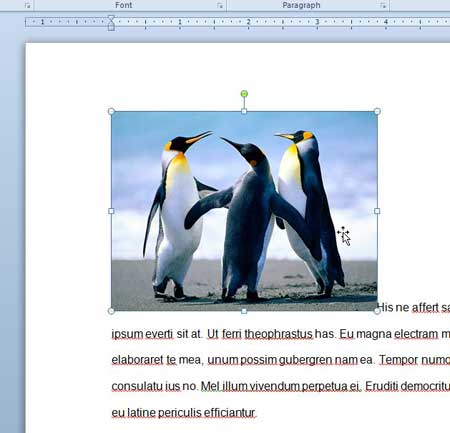
Step 3: Click the Format tab under Picture Tools at the top of the window.
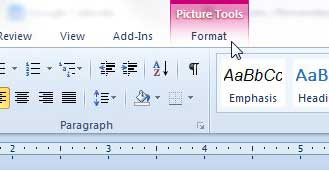
Step 4: Click the Wrap Text button in the Arrange section of the window, then click the style of text wrapping that you want to use.
My preferred method is the Square option, but if you hover over a choice, you can see a preview in your document of how the wrapped text will look.
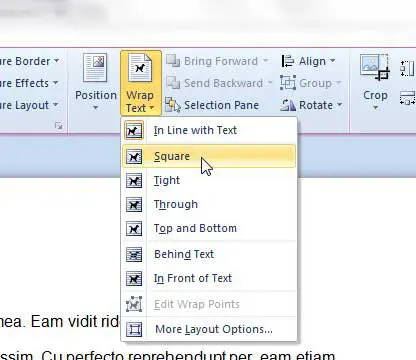
Once you have found the text-wrapping option that works best for this picture, you can continue applying text-wrapping to the rest of the images in your document.
Now that you know how to wrap text in Word, you can use this technique any time you want to make your images flow better with the rest of the content in the document.
If your picture is taking up the entire width of the document, then there will not be any room for the text to wrap around the image. You can click the image, then drag one of the anchors on the corner to make the image smaller and create space for text to wrap around the image.
Summary – How to use text wrapping in Word 2010
- Select the picture.
- Click the Format tab under Picture Tools.
- Click the Wrap Text button.
- Select the style of text wrapping that you want to use for this picture.
Would you like to add some words to your picture? Learn how to add text to an image in Word 2010 so that you do not need to use an image editing program.
Matthew Burleigh has been writing tech tutorials since 2008. His writing has appeared on dozens of different websites and been read over 50 million times.
After receiving his Bachelor’s and Master’s degrees in Computer Science he spent several years working in IT management for small businesses. However, he now works full time writing content online and creating websites.
His main writing topics include iPhones, Microsoft Office, Google Apps, Android, and Photoshop, but he has also written about many other tech topics as well.
Read his full bio here.
I prefer to include images in Microsoft Word documents. They often help illustrate technical examples. The problem for me was I could never quite get the pictures and text to work nicely. Either the surrounding text was too close to the online picture or there was too much spacing. In this tutorial, I’ll show you how to wrap text around an image in Word without using a table. (Includes video tutorial.)
For this word wrap tutorial, I’m taking advantage of Creative Commons images and the RAND function. However, you can use your own text, images, or even an irregular shape.
Create the Practice Doc Without Image
In this tutorial, I’m using Microsoft 365. And if you’re interested in older MS Word versions, I’ve created a PDF document with the steps. Let’s create a practice document.
- Open a blank Microsoft Word document.
- At the top of the page, type
=rand(2,5). - Press Enter.
- This Word function creates 2 paragraphs of 5 sentences of random text.
How to Insert the Picture in Word
You can use any image, but I’m going to use an online image because they come with attached captions. Unfortunately, captions can present issues.
- Place your cursor at the end of paragraph 1.
- From the ribbon, click Insert.
- From the Illustrations group, click Pictures.
- From the menu, select Online Pictures…
- From the Online Pictures pane click Cats. Or, you can choose another category.
- Click the first cat picture. A checkmark will appear in the top right corner.
- Click the Insert tab. It will show with (1) to indicate image count.
Your image will appear between the two sample paragraphs.
Resize the Image & Caption
Most likely, your image is not the size you want, so we’ll resize it. What is not immediately apparent is that the caption has its own sizing controls. Thus, we’re dealing with 2 objects – the picture object and the caption object. If we don’t click the right set, we may end up resizing one object. You can test this by clicking around.
- Click the image. You want to have one set of sizing handles and one rotation control. The red arrow below points to the rotation handle.
- From the top menu, click Picture Format.
- In the Size group, click the downward-pointing arrow in the lower right corner.
- This opens the Layout dialog with 3 Tabs: Position, Text Wrapping and Size. Click the Size tab.
- In the Height section, change the Absolute size to 2.5″.
- Press Tab. The width value will change.
- Keep the Lock aspect ratio box checked.
- Press OK.
You should now have a small image and a caption with the Layout Options control to the right. The image also maintained its aspect ratio.
Adjust Word Wrap with Layouts
At this stage, we’d like to have the text wrap to the right of the image. To do that, we need to change our wrapping option.
- Click the Layout Options control, which is on the right-hand side outside of the sizing box.
- Click the Square option. It’s the first item under With Text Wrapping.
- Click the X to close the Layout Options panel.
We now have wrapped text to the right of the kitten image. However, this wrapping style looks too crowded for me.
Add Space With Picture Styles
For my taste, there isn’t enough room between the image and text. And you can’t highlight the paragraph and indent. This is where picture styles play a role. Fortunately, Microsoft has a number of layout styles that can enhance the image and white space.
- Click your image. The sizing box should show around it and the caption.
- Click Picture Format from the top menu.
- The Picture Styles group appears.
- Click the More button (small arrow) to the right scrollbar to expand.
- Hover over the style icon to determine which one works best for you.
If you played around with the different picture formats, you’d have noticed that the effects differed quite a bit. And while some styles didn’t really increase the space between the image and text, the image effect and coloring made it seem like it did.
There are other places where you can wrap text in Word, such as making custom address labels with an image. While address labels don’t have as many options, the layout concept is similar. And you could probably shrink down this adorable kitten picture to use.
- Wrap Text Video Tutorial
Hand-picked Tutorials
- How to Create Letterhead in Word
- How to Compress a Word Document
- How to Add a Watermark in Word
- How to Reduce Image File Size
- How to Check Word Readability

